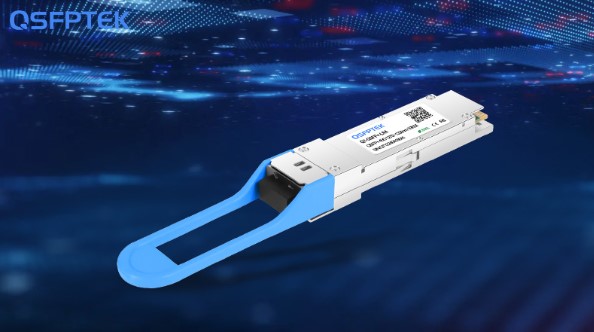Reliable 40G Transmission for Long-Haul Needs
If you’re working with 40G networking gear and looking to stretch your optical links a bit further without overcomplicating your setup, the QT-QSFP+-LR4 might be the piece you’re missing. This module isn’t some brand-new technology—it’s been around, tested, and trusted in all sorts of medium-to-large networks. What makes it stand out is its ability to push 40G Ethernet over single-mode fiber up to 10 kilometers, and it does that without demanding a whole lot from the rest of your infrastructure.
Instead of bundling up tons of fibers or playing tricks with short-reach multi-mode solutions, this one sticks to the basics: four lanes at 10G each, multiplexed together using CWDM technology. You get the speed, you get the reach, and more importantly, you get stability. No drama, no surprise incompatibilities—as long as your switches or routers accept QSFP+ form factor and 40G LR4 standards, this one will slot right in.
The Simple CWDM Inside That Makes a Difference
What’s going on inside the module is actually pretty clever, but also pretty simple if you break it down. The module takes four different 10G data streams, each on a slightly different wavelength, and squeezes them into a single fiber. At the other end, the module does the reverse—splits the signal back into its four parts. This is all done using a built-in CWDM multiplexer and demultiplexer. You don’t have to set any of this up manually; it just works once you plug the module into a supported port.
This internal design is what allows it to run on standard duplex LC fiber links, so if your existing backbone is already set up for 10G or even older connections, upgrading to 40G with LR4 modules doesn’t mean ripping things out and starting over. That kind of compatibility makes a real difference when you’re juggling multiple priorities across your network.
Power, Compatibility, and Cooling: No Special Treatment Needed
Another thing to like about the QT-QSFP+-LR4 is how well it behaves in real-world setups. The power draw is reasonable—nothing extreme that would make your gear sweat or throw off your cooling budget. You don’t need fancy transceiver cages or custom cooling solutions. Pop it into any QSFP+ slot that supports LR4 optics, and you’re off.
And as far as compatibility goes, it lines up with IEEE 802.3ba standards, which is just a fancy way of saying it plays nicely with most major brands—Cisco, Juniper, Arista, HPE, and so on. Some systems might require a coded version to bypass vendor locking, but that’s easy enough to source from the right supplier.
When Should You Use the LR4?
The QT-QSFP+-LR4 is best for networks that need to move large volumes of data across decent distances—say, campus networks, inter-building links, or even longer server-to-switch connections in distributed data centers. It’s not your go-to module for short-range, high-density switch racks—that’s more the realm of SR4 or DACs—but when you need distance without moving up to 100G, LR4 is a great sweet spot.
It’s also worth noting that 10 km is the official max range, but in practice, as long as your fiber is clean and your patching is decent, it’ll often give you a bit of extra wiggle room. You don’t have to operate it right on the limit.
Closing Thoughts
At the end of the day, the QT-QSFP+-LR4 offers a pretty low-friction way to scale up to 40G. It’s not flashy, but it’s effective. You won’t need to relearn your whole network layout to make it work, and that’s kind of the point—it slides into place, does its job quietly, and lets you get on with the bigger picture.


